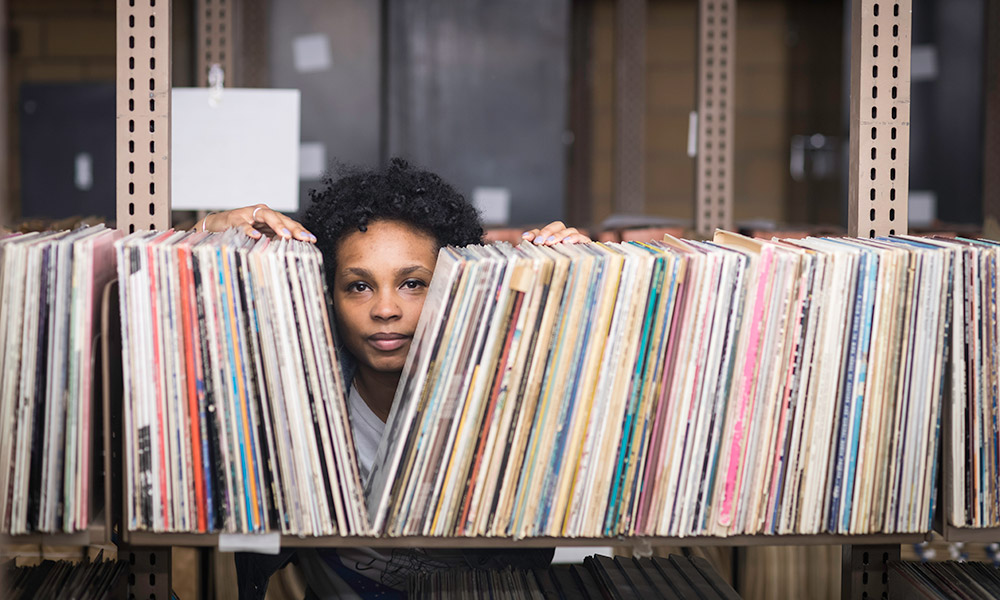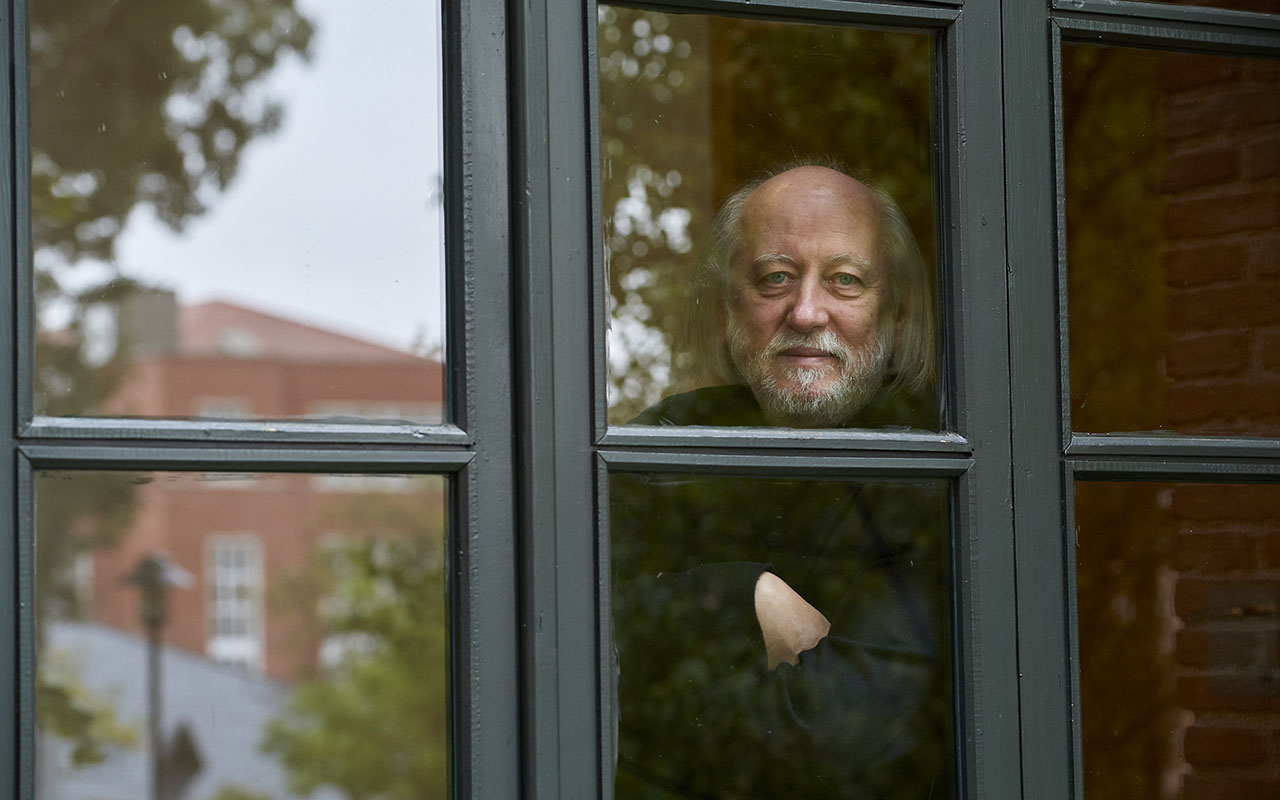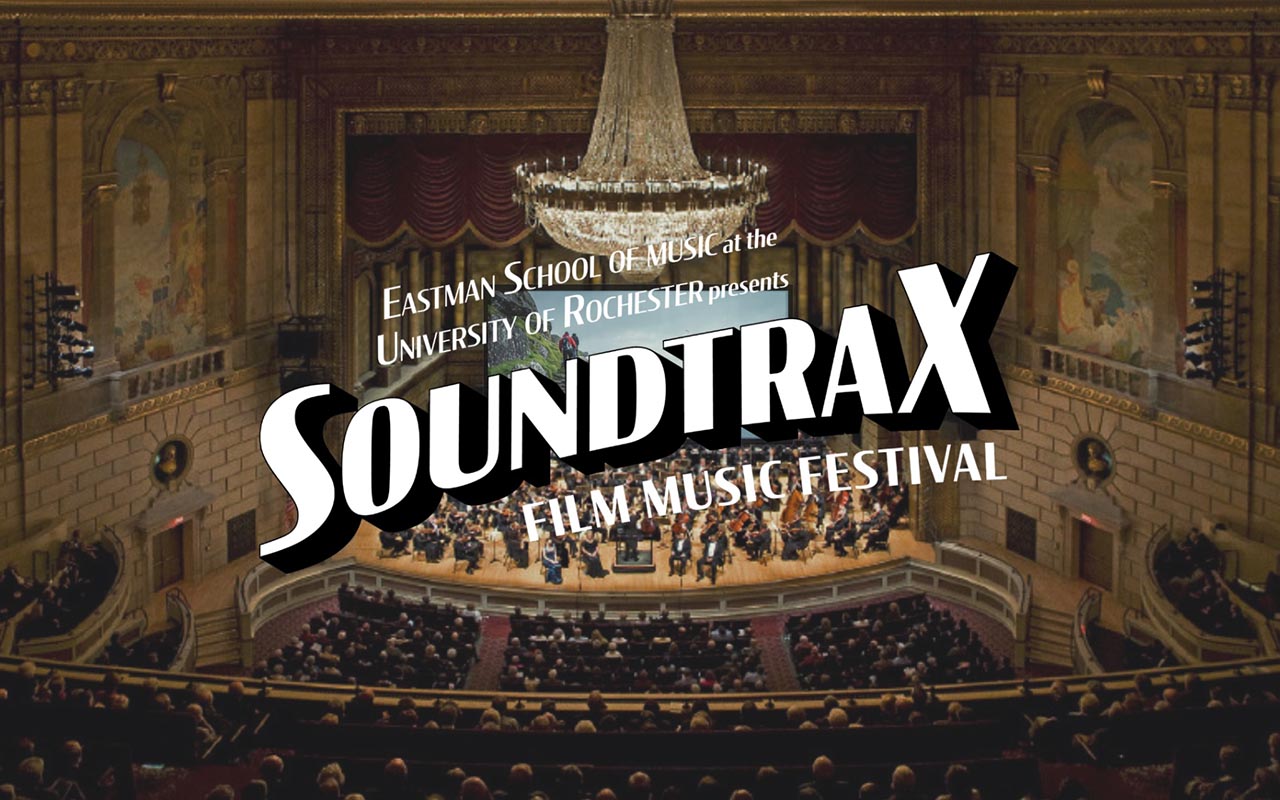Bob Dylan still sings that “the answer is blowin’ in the wind,” but for artist Ash Arder, the wind is where she found the question.
Rochester’s first artist-in-residence, Arder brought an artist’s sensibility to her exploration of research papers by computer scientists working to mimic the movement of plant leaves in virtual reality. She likens the experience to eavesdropping, and she translated their technical terms—such as “wind-vector collisions” and “wind-cell cube”—into images and symbols more evocative to her. It was an imaginative process, one that involved an effort to understand their work and, even more important, to investigate her own reactions to it.
More about the Artist-in-Residence program
New this year, the artist-in-residence program brings an artist or art collective to the University for two academic years to conduct research, produce a body of work, and teach a selection of studio art courses. The program aims to draw artists—either established or recent graduates of MFA or PhD programs—who are able to collaborate across disciplinary fields and draw on the University’s wide range of resources, including labs and facilities, practice and performance spaces, libraries, archives, research centers, and special collections.
New artists-in-residence will arrive every other year. The schedule means that “students will have the opportunity to meet and to work with potentially two additional artists-educators during their undergraduate studies,” says Evelyne Leblanc-Roberge, an associate professor art and the associate chair of the Department of Art and Art History. “The more exposure to different art practices, the richer an art education is.”
“Is ‘convincing’ the new ‘real’? And where does that leave the real ‘real’?” she asked the audience last fall at a lecture introducing her Hartnett Gallery exhibit of the work, “A Study: Collision Detection.”
Arder, who was born in Flint, Michigan, and is now based in Detroit, works across the boundaries of formal artistic disciplines to explore physical and conceptual systems, especially those involving ecology. She earned a bachelor’s degree at the University of Michigan in 2010 and a Master of Fine Arts degree from the Cranbrook Academy of Arts in 2018.
Evelyne Leblanc-Roberge, an associate professor of art and the associate chair of the Department of Art and Art History, calls Arder a “perfect fit” as the University’s inaugural artist-in-residence, both within the department and for the University as a whole, because of the “exciting ideas she explores in her work that cross-pollinate with other programs, such as environmental humanities and digital media studies.”
Recently, Arder has been visiting the Sibley Music Library and talking with ethnomusicologists at the Eastman School of Music. She’s researching the role of jazz music in the expression of ideas between people and the environment.
Says Arder of her Rochester year: “It’s been a whirlwind, in a good way.”
Answers with Ash Arder
What have you been teaching?
I teach two introductory courses and one advanced course. Last semester, I taught introduction to drawing and introduction to video art. The introduction to video art felt natural—I use video in my work. Drawing isn’t something that I do as a polished portion of my creative practice. It’s something that I use when I’m thinking through ideas, so I taught it in the way that best reflected my own practice. Students were drawing with light and drawing with wire. We were thinking about the relationship between performance and drawing.
This semester I’m teaching a class on the idea of the swamp. It’s an opportunity to design my own course. I’m thinking about the swamp mainly as it is in the U.S., but particularly as it’s explained through the media and popular culture. The course is considered an advanced new media course, and the undercurrent of my work is the relationship between people and plants, and human and nonhuman nature.
Over the holidays, I did a residency in New Orleans, at “A Studio in the Woods.” [Associated with Tulane University’s ByWater Institute, the nonprofit organization works to preserve and protect the Mississippi River bottomland and provide a place for artists and scholars to engage with environmental issues.] Working there, I was proximate to a city that has an important relationship with the swamp. It’s been special to teach about something that I’m so invested in now, in my own practice.
Why the swamp?
The swamp has been villainized so much in Western media, and I wondered, what’s the cause of that? When did it start? And I went down a rabbit hole. The course is framed as a case study—the swamp is a particular study in the way that art can challenge or maintain narratives, and in the relationship between people and place.
A lot of what I learned in school was dealing with the environment from the perspective of science, or politics, or civics. I think it’s really important to acknowledge the role that art and creativity play in reflecting our relationship to place.
The environmental humanities use different disciplines to help paint the picture of what our relationship to place has been, what it is now, and what it might be in the future. I think that the future component is critical, in the face of climate change. We can create abstracts for why climate change happens from a scientific perspective, but to attach that to story and emotion is also important, because we aren’t at the stage of the abstract anymore, and we haven’t been for quite some time.
What do you see as the relationship between the virtual and the real?
This is something I deal with daily as a millennial. I’m fluent in digital technologies, but I’m also very uncomfortable with what they’ve done as socializing tools—or maybe as anti-socializing tools. I’m constantly trying to navigate what is real. I think the idea of what’s convincing versus what’s real is almost the question of this generation.
We’ve gotten to a place where cultivated images of ourselves online is for some people as productive a tool for social mobility as their corporeal existence is. When it comes to virtual reality, what are the implications of a digital plant moving in the wind so convincingly that you don’t need the real plant anymore? The question is, is convincing good enough? And is “good enough” good enough?
How do you describe your work as an artist?
I think about my creative practice as a series of questions. I don’t think about a work as a proclamation or a resolution or a line in the sand. I make art to make tangible the questions that I have. For me, the components of the process of discovery can exist anywhere—for example, science, food culture, or fashion.
I thought about the works I exhibited at Hartnett as “meditations.” That term felt good to me because it allowed me, as the artist, to have a continual involvement with the works, even when they’d left my studio and gone to the gallery. For me, the whole point of existing as a creative practitioner is a kind of dialogue, either with myself in a new way or with viewers—or between viewers, without me. Calling these works meditations gives people permission not to search for meaning, but simply to be with the objects in space.




